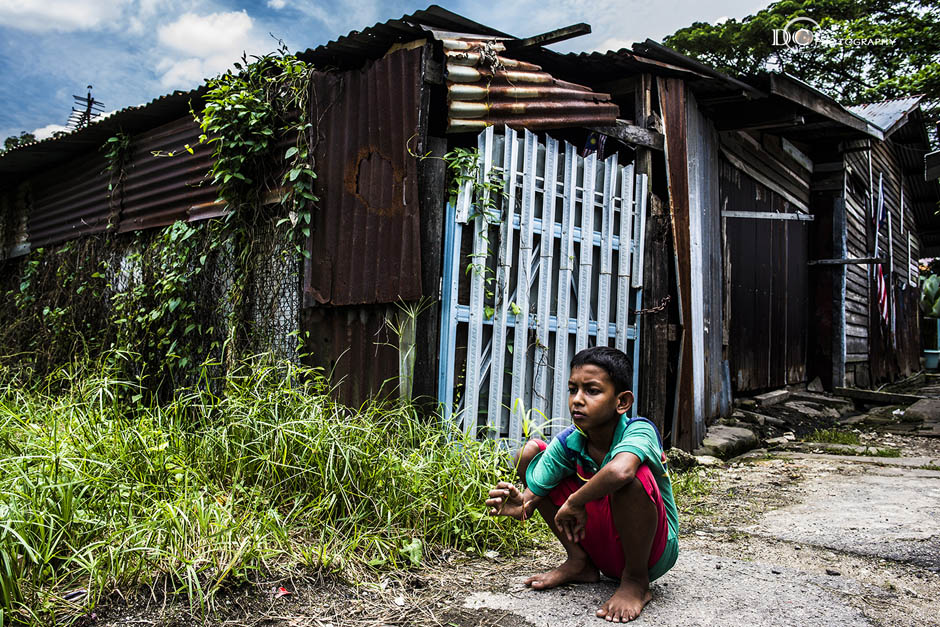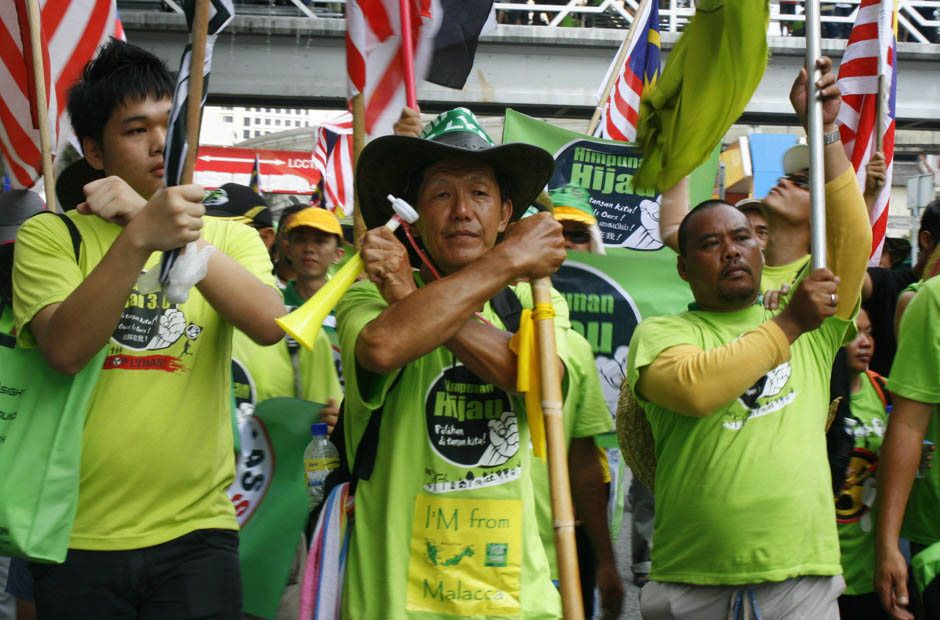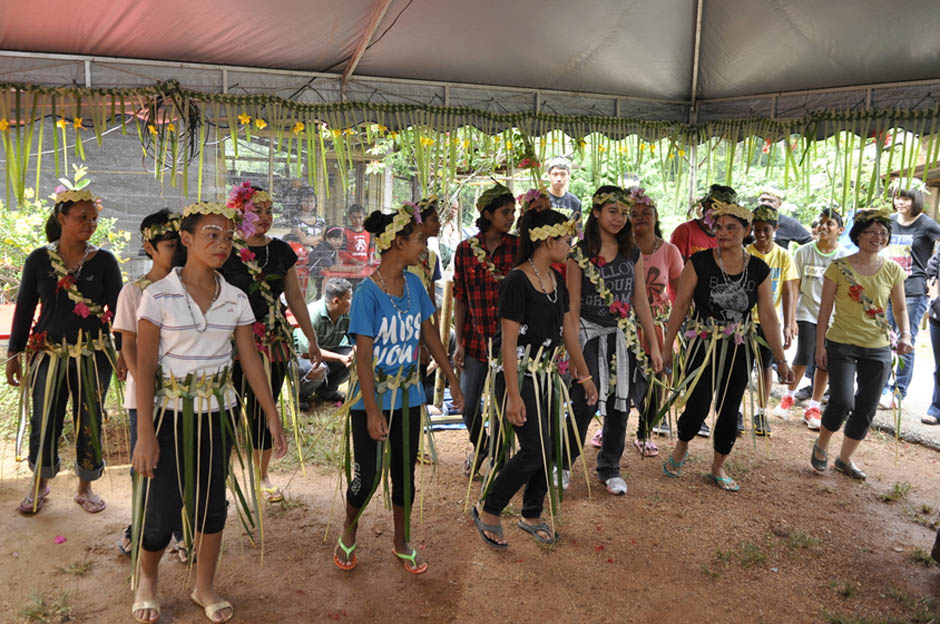| Will Melaka save these babies? |
 |
 |
 |
| Monday, 12 October 2009 20:43 | ||||||||||||||||||||||||||||||||||||||||||||||||||||||||||||||||||||||||||||||||||
|
What fate belies Melaka's Hawksbill hatchlings? The Melaka State Government recently announced plans to develop Pulau Upeh into a resort for eco-tourism. For many environmental groups, these raised alarm bells into the nature and wisdom of the operation. SV SINGAM digs into the sand for answers
Never mind that there are many suitable stretches on both coasts of the Malaysian peninsula where the Hawksbill Turtles could have chosen to nest. Nature marked 'X' on the beaches of Melaka. The state hosts the largest nesting grounds on the peninsula for the Hawksbill.
Will it remain so in the years to come?
In July, the Melaka State Government announced plans to develop Pulau Upeh and the nearby areas for the purposes of tourism. The blueprint includes reviving an abandoned 120-chalet resort plus adding new accommodations and facilities.
“The island would also be a stone’s throw from the soon to be constructed RM250 million Arab City Klebang,” said Menteri Besar Ali Rustam at a ceremony then. “I have asked the state Tourism Promotion Board to look into offering packages for tourists to visit Pulau Upeh,” he added.
This has sent shivers among nature conservationists. Poorly managed, such development may spell doom for the Hawksbill Turtles that currently find sanctuary there. The project has now been deferred while an Environment Impact Assessment report is conducted.
Pulau Upeh is the most significant of the five popular Melaka nesting grounds of the Hawksbill. More egg clutches are laid on Pulau Upeh than in any of the other sites. Pulau Upeh's clutches are typically larger than those on the other sites. And it is believed that the Pulau Upeh clutches are healthier and hatch more successfully than those from other sites.
What adds to the concerns about Melaka's will surrounding the ecological well-being of these turtles is its laws. Or the absence of it.
Unlike Sabah and Sarawak and, more recently, Terengganu, Melaka has not enacted any legislation for the purpose of protecting the marine environment. Turtle eggs are fair game for collectors. The sale of eggs and other turtle parts is perfectly legal.
Under these difficult circumstances, the State Fisheries Department has made laudable progress in arresting the alarming decline of nestings in recent years.
The conservation method adopted by the Fisheries Department is very simple. Egg collectors are licensed to collect the eggs and sell them to the Department. These eggs are then re-buried in a hatchery that seeks to emulate a natural nesting ground. When the eggs hatch, the hatchlings are moved to the open beach as quickly as possible so that they can make their way to the open sea and escape the predators of land and shallow waters.
However these hatcheries are only an interim solution because they increase the risks faced by eggs and hatchlings. Ultimately, the best solution is to allow turtles to nest in protected areas and to allow the eggs to hatch naturally.
Previously uninhabited and then acquired, partially developed and abandoned by the TNB Training Centre, the island offers turtles the best opportunity for undisturbed nesting and proliferation.
Unfortunately, the plan by the State Government to further develop the island into a major tourist attraction may end up disrupting the nesting and the Hawksbills may face the same fate as the Leatherbacks of Terengganu, which are on the verge of extinction.
The announcement by MB Ali Rustam that Pulau Upeh will be developed as a turtle conservation centre is laudable. But the ecosystem of the island is so tiny and fragile that any kind of development activity can disrupt it and destroy the sensitive turtle habitat.
Already the reclamation activity along the shores of Klebang have begun to impact the Pulau Upeh beach. Construction activity on the island itself will surely contaminate the waters and damage the beach itself.
More than the construction activity, the presence of many chalets will severely increase light pollution on the island and disorient the hatchlings, thereby disrupting their passage to the open sea. And the huge influx of tourists demanding to view turtle nestings will affect the nestings as badly as what happened in Terengganu.
The thing is, there is a simple and effective way to transform Pulau Upeh into an exemplary Turtle Preserve and at the same time tap the growing global ecotourism market, returning a comparable level of income to both project operator and state.
Environmental experts say that instead of adding more chalets and aiming for the mass-market tourist, what the state should do is transform a few of the existing buildings into comfortable eco-friendly accommodation for discerning tourists who will pay top dollar for such an experience.
Declare the beach off-limits during nesting and allow the tourists to observe the nesting via CCTV. Provide the tourist with ample information about turtles and turtle nestings. Engage these eco-conscious people in the campaign to save threatened spaces and species. Include in the package a trip to the hatchery in Padang Kamunting if they want to see live turtle hatchlings. Engage the WWF in these conservation activities and put Melaka on the world map of responsible ecotourism. For the mass-market tourist, organise daytime trips when they can look around the island, visit the Turtle Museum and watch video recordings of turtle nestings.
The land reclamation off Klebang is all but done and cannot be undone.
But Pulau Upeh itself can be saved. All the Melaka State Government has to do is to rethink the strategy on how to transform Pulau Upeh into the best Hawksbill sanctuary in the world. We will all end up the winners.
More stories: Conservation challenges in Melaka The Terengganu Leatherback story Turtle hatcheries an inadequate solution
More links: Hawksbill Turtles at Wikipedia WWF - Tracking Hawksbills in Melaka Wildasia - Hatching a future for Hawksbill Turtles in Peninsula Malaysia |


 There are five nesting grounds in Melaka, each presenting a
There are five nesting grounds in Melaka, each presenting a 





